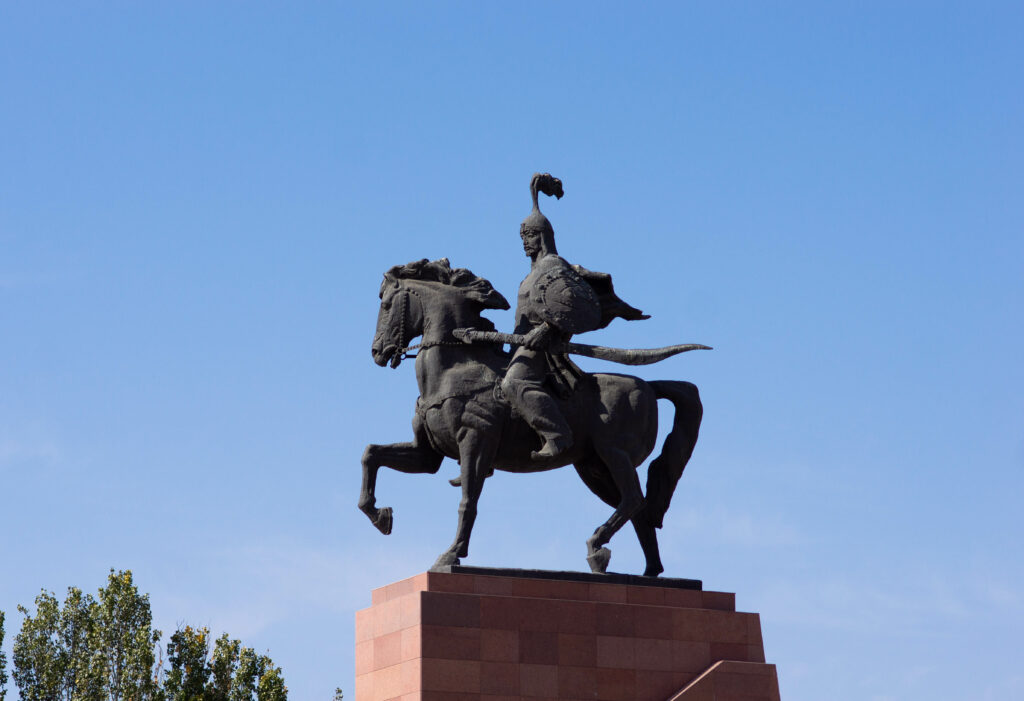By Laura Standel
The Silk Road had a giant impact worldwide as it was the main trade route from 130 B.C.E until 1453 C.E. It started in north-central China and ran all the way down to the Mediterranean Sea where goods from China could be shipped to Europe. Along this route was a nomadic community that makes up current-day Kyrgyzstan.
Kyrgyzstan is a small country in Central Asia with beautiful mountains and a crystal blue lake. While it contains natural views, it is also filled with cultural beauty. Among these is its language.
The Kyrgyz language has been around for at least 2,000 years and is a Turkic language of the Kipchak branch, however, it has gone through three different ‘official’ writing systems. While we know of these three, it is unknown if the language of Kyrgyzstan had an original and unique script due to the strong oral tradition of the nomadic people. Its first known writing system was the Perso-Arabic alphabet brought on by the Turks and the Ottoman Empire until 1928. Then it was changed to the Latin script. Finally, Stalin mandated that Kyrgyz be written in the Cyrillic alphabet in 1941. That remains the status of the writing system today. At the same time, Stalin also made Russian the country’s national language. When Kyrgyzstan became independent after the fall of the USSR they kept Russian as the national and business language, making it the first language for schools and the most used language in major cities. Although the new politicians did have plans to change the writing system back to the Latin script, there has been little to no effort in bringing about that change. In recent years, Kyrgyzstan has increased its efforts to increase the presence of Kyrgyz in the country. It is now being taught in schools and its use in daily life is encouraged for everyday communication, radio, music, and TV shows, as well as in business settings. There are 3,830,556 native Kyrgyz speakers and 271,187 second-language speakers who still have Russian as their native language.
Arguably, Kyrgyzstan is home to the longest epic in the world. The Epic of Manas is longer in terms of the number of verses than the Sanskrit epic Mahabharata and the Tibetan Epic of King Gesar. However, the phrases are short so it has fewer words. It has been translated not only into modern Kyrgyz but also into many more languages around the world.
Chinghiz Aitmatov (1928-2008) is one of the most prominent writers in Kyrgyz history because of his modern works in the Kyrgyz language. There are many billboards throughout the capital city of Bishkek and around the country advertising his books written in the native language. Through these promotional efforts and remembering their history, Kyrgyzstan is bringing back its native language and finding ways to bring it into our modern day.
Sources:
Nag, Oishimaya Sen. “Languages Spoken in Kyrgyzstan.” WorldAtlas, WorldAtlas, 25 Apr. 2017, www.worldatlas.com/articles/languages-spoken-in-kyrgyzstan.html.
“The Epic of Manas in Kyrgyzstan.” Advantour, 2001, www.advantour.com/kyrgyzstan/culture/epic-manas.htm.

